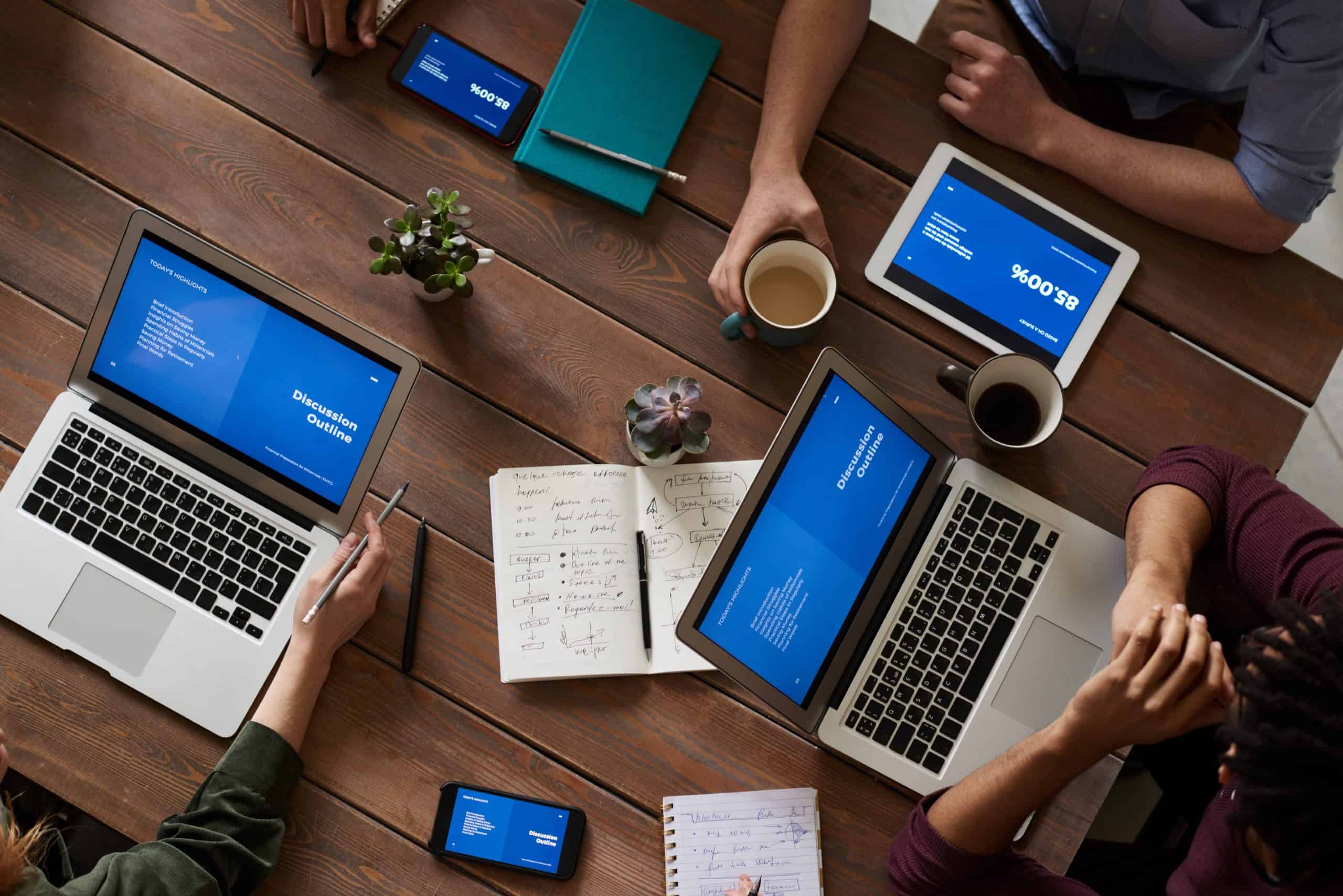So you want to create a website that wins over customers? You can’t do it without thinking about web design. Web design affects everything from the way your website looks and how it functions to your rankings on Google! It also impacts your conversion rate, credibility, and customer satisfaction.
Yep, it’s that important so it’s no wonder why so many opt for collaborating with experts like G Squared web agency. Lots of strategies and techniques go into designing a website. Today we introduce you to 10 of the most powerful.
Ready to get started? Let’s go.
Say more with visuals
If you can say it with a picture or a graphic, do so. You’ll not only capture your reader’s attention faster, but you’ll be able to communicate so much more than a paragraph of text could.
Sure, in some cases, you’ll want to dive deep into explanations and descriptions. But for your homepage and landing pages, it’s good practice to focus on powerful visual communication.
Here are some ideas of how to show rather than tell:
- Infographics
- Illustrations
- Graphs
- Photographs
- Videos
- GIFs
Consider your colors
It sounds basic, but colors really do matter. In fact, users can make a snap judgment about your business, what you do, and how credible you are based on the colors on your website and how you’re using them.
The biggest thing to keep in mind is that your colors should be consistent with your branding.
Stick with 3-ish colors that reinforce what you’re trying to say about your business. Ask yourself – how do I want my visitors to feel when visiting my site?
Break it up
The goal is to make your content quick to read and easy to digest. To do that, you’ve got to embrace the white space.
Try these tactics:
- Shorter sentences
- Smaller paragraphs
- Bullet points & lists
- Larger fonts
- 24px line-height
- Narrow text columns
Readability is a huge part of website design. Even if you’ve got amazing stuff to say, no one’s going to stop and read your content if it’s not convenient for them.
Keep it consistent
Don’t stress out your users with inconsistent design and chaotic messaging. Make them feel safe and familiar. Help them know what to expect.
Here are some things to keep consistent across your website:
- CTA buttons
- Color scheme
- Logos
- Tone & voice
- Menus
- Fonts
Being consistent with these elements throughout your website helps users navigate your site better and reinforces your message.
Simplify navigation
If it takes too long to find what they’re looking for, visitors are going to bounce right out of your website. Yikes!
Make it simple and easy for them to navigate each page and your website as a whole.
According to a strategic and interactive designer, Michelle Dipp, a key part of navigation is sticking with standard formats. You know, putting your logo in the top left, your contact button in the top right, and your menu top and center. Users expect those things. Give it to them.
Reduce the menu confusion and cut out unnecessary options. The more options you have, the longer it will take users to decide, and the more likely they’ll leave your site empty handed. If you’ve got a large site, add a search bar so users can find whatever they’re looking for.
Speed things up
Your design choices can make your website as slow as a snail or fast and nimble like a fox.
And load speed really, really matters. Users are quick to abandon any website that’s taking too long to load. You’ve got about 3 seconds to keep their attention.
Here are some design principles to make your site quick and nimble:
- Reduce image file sizes (and optimize your images to retain excellent quality with the smallest size possible)
- Use browser caching tools
- Reduce HTTP requests and redirects
- Host videos on third-party site (like YouTube) and embed them on your site
- Minify CSS, HTML and JavaScript
Make it compatible
The fact is, more and more users are looking at websites on their phones or other mobile devices. If you’re not catering to them in your web design, you’re falling behind.
Having a mobile-friendly site shows visitors that you’re professional and credible. It improves user experience and drives up conversions.
Oh, and it’s good for SEO (search engine optimization) too. Google preferences mobile-optimized websites in its search results.
Invest in quality images
Let’s face it; we live in a highly visual society. The photos you use on your website (and other platforms) influence the way people view your brand enormously.
What do high-quality images do?
- Attract more visitors to your website
- Increase engagement
- Keep people on your site for longer
- Create an emotional connection with customers
- Drive-up leads and sales
Pop your CTA
Your call-to-action (CTA) should be clear and obvious. You want people to click on it, so you’ve got to make it as convenient as possible.
Sounds obvious, but many websites hide their CTAs away, forcing potential customers to go hunting or give up.
Guide your potential customers smoothly down the buyer journey with CTAs that pop off the page. Whatever action you want them to take, a well designed CTA can help you get them there.
Focus on UX
Number 10 is the culmination of everything we’ve talked about. If you look deep at each of the other practices, you’ll find this one underneath them all.
Successful web design is always about optimizing for user experience (UX).
Give your website visitors a positive, seamless experience, and you’ll reap a world of benefits. If you ever get stuck deciding on your website’s design, put on your customer’s shoes and see it from their side.
Ask yourself what’s going to make my customer feel valued and satisfied? Keep that at the forefront of your web design. Always.


